Foot and Leg Pain Centre
Leading Children's Podiatrists Hornsby
Helping little feet thrive with care
Paediatric Podiatrist
Are sore feet or legs a recurring issue for your child?
Dr Angus Chard PhD, a Certified Sports Podiatrist and the owner of the Foot and Leg Pain Centre near Hornsby, brings a wealth of expertise to children’s podiatry. With his Doctorate specialising in Lower-Limb and Foot Musculoskeletal Medicine, focusing on Paediatric and Sports Injuries, Dr Chard is highly skilled in managing children’s foot and leg conditions. He personally supervises the treatments offered by the clinic’s podiatrists, all of whom share a keen interest in paediatric podiatry. Dr Chard’s unique combination of expertise and dedication ensures outstanding care for children.
Paediatric Podiatrist Hornsby
Recognising that medical visits can be overwhelming for children, we prioritise making the environment as comfortable and inviting as possible. Our goal is to replace fear with reassurance and deliver the highest level of care to each little patient.
Michael Chard, a Licensed Service Dog, provides incredible comfort and emotional support with his gentle scratches and cuddles. His calm and loving nature helps reduce anxiety in children and brings peace to those who need it most.
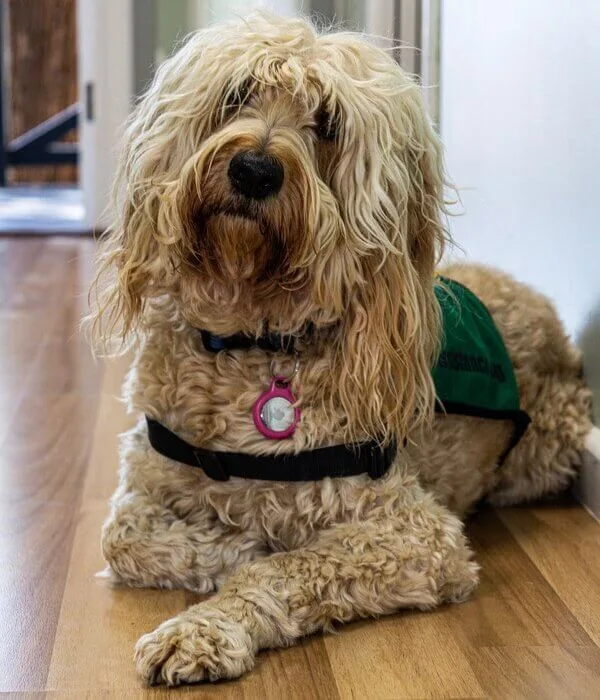
What We Can Do for You
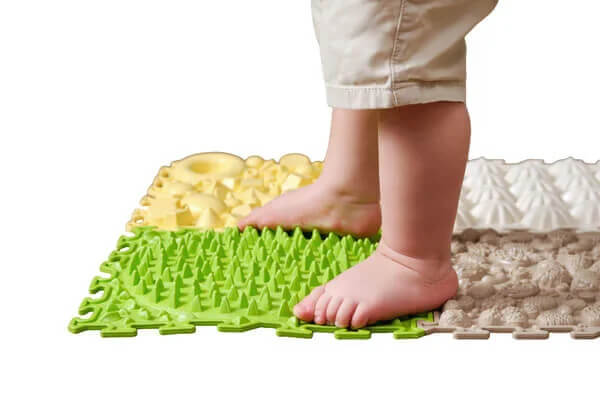
Flat Feet
After 18 months, flat feet often appear in young children and typically resolve on their own. Yet, in some situations, they remain and may cause lifelong difficulties. Early assessment, similar to checking teeth or vision, is essential to address conditions that need attention. Regular follow-ups help ensure children grow out of any identified issues successfully.
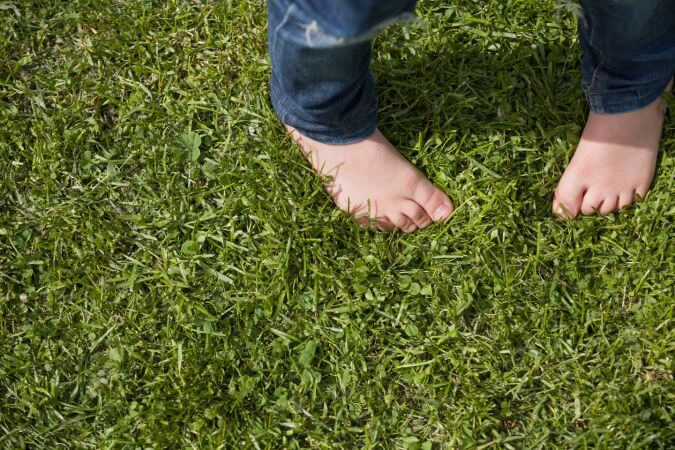
Intoe Walking
Intoe walking, also known as pigeon toes, is a common condition in young children and often corrects itself by the age of 4. If it persists beyond this age, it may result in instability, discomfort, or changes in movement patterns. Early intervention can help ensure proper development and avoid potential problems.
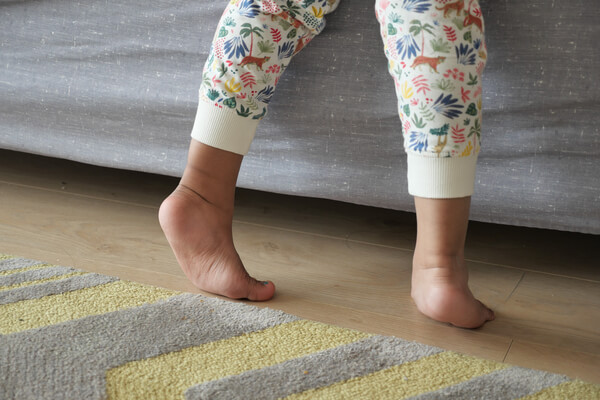
Toe Walking
Although toe walking is normal in toddlers, persistent cases beyond age 4 can indicate conditions such as tight muscles or neurological problems. If untreated, it may cause knee, back, or joint pain. Early assessment can help identify the cause, prevent future issues, and promote healthy movement.
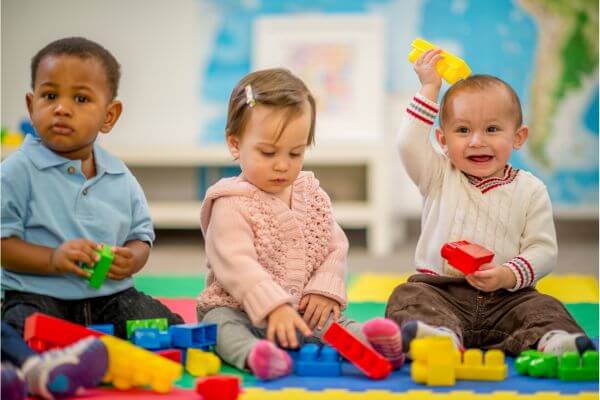
Late or Non Walkers
Not walking by 18 months can signal possible foot or leg conditions in children. A thorough podiatric evaluation, combined with regular follow-ups, ensures their healthy growth and progress is closely monitored.
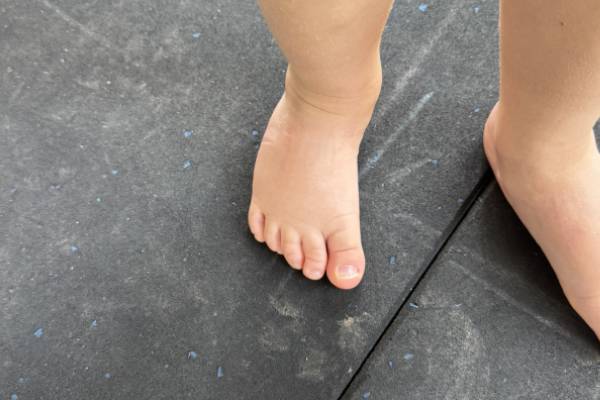
Banana Foot
Metatarsus adductus, commonly known as banana foot, presents as an inward curve of the feet, typically caused by the foetal position and uterine pressure. Although it can resolve naturally by age 4, treatment is most effective before age 2. Without intervention, it may progress to a structural deformity, resulting in dynamic pain and discomfort.
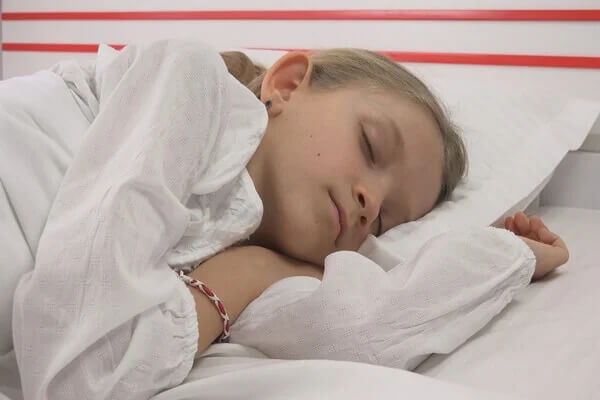
Growing Pains
Generalised leg aches and pains are often deemed normal shortly after a growth spurt, but experts agree that pain lasting beyond two months is abnormal. These issues can be effectively treated when identified as gross muscle overuse syndromes. Growing pains don’t need to be part of your child’s life—modern research shows they’re not an inevitable part of growing.

Severs
A common condition in children aged 7–12, Sever’s disease leads to heel pain during growth spurts. This issue frequently arises in active children but can also affect those who are less active. Treating the structural factors causing the pain can provide relief for all children.

Vertical Talus
Excessively flat feet can sometimes be caused by a vertically aligned talus, known as talipes calcaneovalgus. While many cases resolve naturally, some persist, resulting in flat feet that can affect children, teens, and adults. This may lead to weakened foot strength and compensatory issues. Early detection ensures children can reach key milestones such as standing, walking, and running.
Foot And Leg Pain Centre
Expert Care for Kids' Feet in Sydney
A toddler’s growing legs and feet experience many changes. Routine monitoring and measurements are key to identifying concerns early and providing appropriate care. Early detection is essential for healthy legs in adulthood — take steps to safeguard your child’s future well-being.
1-2 years
During this period, we monitor your baby’s transition into toddlerhood, keeping a close eye on their foot structure and development. We ensure healthy growth as they begin crawling, standing, and walking, addressing any concerns promptly.
2-3 years
At this stage, we focus on your toddler’s walking, posture, and balance, identifying any potential issues like overly flat feet. We provide tailored advice to promote healthy growth and confident exploration.
4-6 years
As children grow more active, we assess their feet for conditions like excessive flatness or walking irregularities, such as in-toeing, toe walking, or clumsiness. This helps ensure proper development so they can move confidently.
Paediatric Assessment
Little feet need expert care – book your child’s podiatry appointment now.
Foot And Leg Pain Centre
Nurturing your child’s development
Children’s growing bodies can sometimes develop leg aches, posture problems, or structural abnormalities. Identifying these issues early helps encourage proper skeletal growth and supports their active lifestyle.
We focus on early care to support healthy development at the Foot and Leg Pain Centre.
Your First Visit
Your child’s initial visit includes a detailed and fun assessment, focused on diagnosing their foot health while ensuring a supportive and comfortable environment for everyone.
Treatment
We provide individualised care for your child, concentrating on specialised strategies to ensure healthy foot growth and relieve any pain or discomfort.
Working Towards Your Outcomes
Our focus is on ensuring your child enjoys the best results, enabling them to move with improved foot health and confidence, all while remaining happy and active.
Why Choose Us
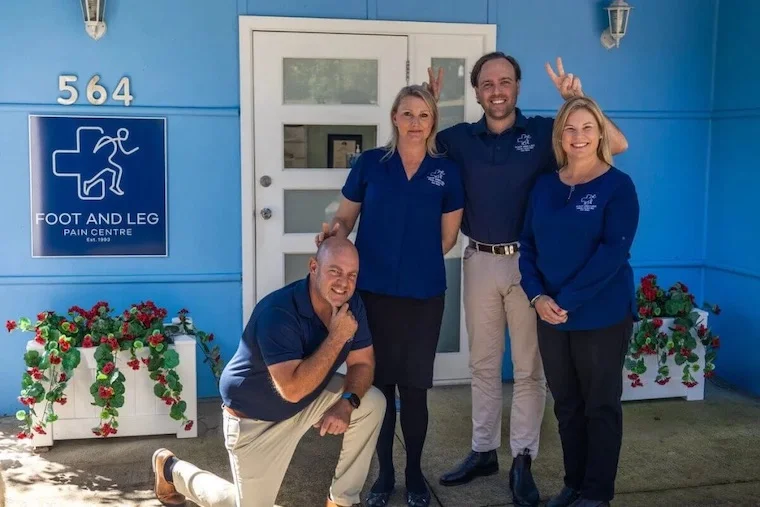
A Team You Can Rely On
As a second-generation Certified Sports Podiatrist, Dr Angus Chard, PhD, is internationally recognised for his expertise and extensive clinical experience, heading a team of skilled professionals.

Committed to Caring
Our team at Foot and Leg Pain Centre is passionate about helping individuals, from children to adults, achieve their goals while reducing pain and discomfort.
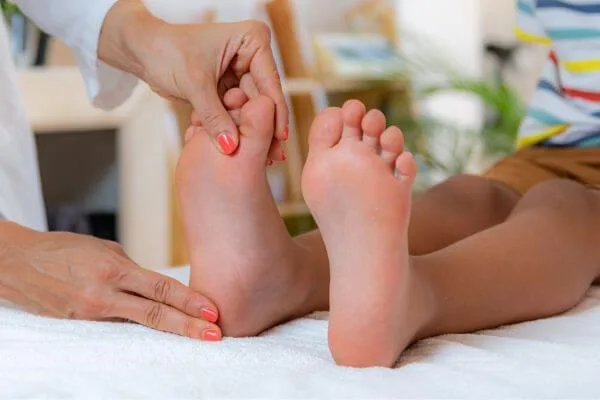
Evidence-Based Care
Along with our cheerful approach and knack for helping children feel comfortable, we deliver treatments that combine scientific evidence with clinical expertise. We offer clear information and treatment choices, ensuring a supportive and stress-free experience.
Helping Little Feet And Legs
We offer numerous treatment solutions at Foot and Leg Pain Centre. Your child’s specific care plan will be determined by the location, nature, and underlying cause of their pain.
Some children might benefit from 3D printed custom orthotics, while others may require follow-ups, footwear guidance, foot strengthening exercises, posture and biomechanical assessments, manual rehabilitation, or adjustments to their walking and running techniques.
Meet Our Founder
Dr. Angus Chard PhD
With more than 32 years of clinical expertise, Dr Angus Chard PhD, our Founder and Director, focuses on helping young patients achieve the right balance between evidence-based care and successful treatments.
Healthy feet mean happy kids – schedule an appointment with Dr Angus Chard PhD or one of our skilled podiatrists near Hornsby today.
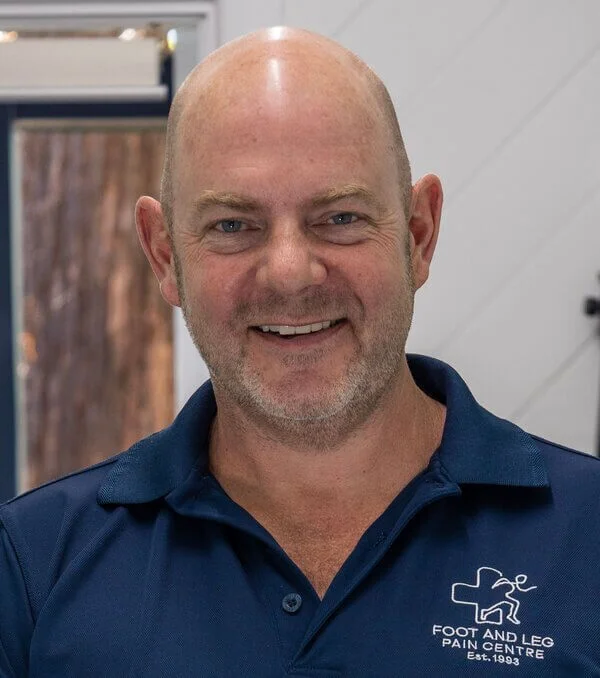
Meet The Team

Michelle Cuthbert
With over two decades of podiatric expertise, Michelle Cuthbert specialises in children’s foot health. A runner and mother of two young girls, she is passionate about the importance of early intervention and delivering tailored care to support children’s well-being.
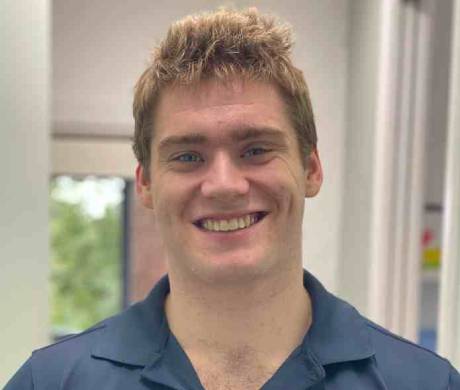
Thomas Shannon
As a podiatrist and professional athlete, Thomas Shannon specialises in paediatric lower limb care. His expertise in musculoskeletal strength and conditioning, combined with his elite athletic background, allows him to deliver comprehensive treatment. Thomas has represented Australia in both hammer throw and Olympic weightlifting.
Foot And Leg Pain Centre
Book Now
Paediatric Assessment
Tiny feet deserve big care – schedule your little one’s podiatry appointment today.
Foot And Leg Pain Centre
Frequently Asked Questions
Sometimes, but having your child assessed early helps monitor their development and ensures they do. Ignoring potential issues can lead to unnecessary pain, and not all children simply grow out of these conditions. Podiatry can identify and address problems early, giving your child the best chance for pain-free growth.
Although occasional aches from activity are reasonable for children, persistent achy legs and feet are not. Persistent growing pains are easily treated by addressing the muscle overuse that causes them.
Flat-footed children often experience quicker fatigue during activities and more pathological movements in their knees and ankles. Arch maturity occurs by age eight, but 39% of adolescents with flat feet may suffer knee pain, and 35% could develop hip or lower back pain. Since adult-like walking develops by age four, addressing abnormal foot positions early is crucial to prevent issues like toe-walking or pigeon-toeing in later life.
Early assessment is crucial for your child’s foot and leg health. During the first visit, we’ll conduct a thorough biomechanical assessment, gait analysis, and precise measurements. This provides a baseline for future monitoring, ensuring proper development. Even infants can experience foot and leg issues, so addressing concerns early with a skilled professional is essential.
No referral is required to book a podiatry appointment for any age or reason. Simply book online or call the practice, and we’ll collect all necessary details at your initial visit.
We recommend parents have their child’s feet checked at least once, just like regular eye or dental check-ups. If your child has foot or leg pain, we’re here to help. Unsure? An initial assessment will pinpoint the issue and guide the next steps. For emergencies, always dial 000.
Ensuring children’s shoes are comfortable, with enough length, width, and toe room, is vital. Evidence strongly supports barefoot activity for healthier foot development, as the ground’s sensory feedback engages muscles. Even minimalist supportive shoes, however flexible, may interfere with this natural process.
The appropriate footwear for your child varies based on their goals. In some cases, minimalist, flexible shoes are ideal, while others require supportive footwear with tailored levels of structure. Opt for shoes with flat, flexible soles that bend at the toe and a wider front than heel. Laces or straps are essential to keep the shoes snug and prevent unnecessary movement.
Led by Dr Angus Chard PhD, the team at the Foot and Leg Pain Centre has the expertise, credentials, and connections with shoe stores and manufacturers to help you navigate the complexities of footwear options. For tailored advice regarding your child’s foot needs, reach out to our podiatrists today.
Yes, we take an evidence-based approach. However, we also value the balance between evidence and hands-on experience, as relying solely on research can be limiting. References for the information on this page are listed below.
- Alfaro-Santafé, J., et al. (2021). “Effectiveness of Custom-Made Foot Orthoses vs. Heel-Lifts in Children with Calcaneal Apophysitis (Sever’s Disease): A CONSORT-Compliant Randomized Trial.” Children 8(11): 963.
- Bleck, E. E. (1983). “Metatarsus adductus: Classification and relationship to outcomes of treatment.” Journal of Pediatric Orthopaedics 3(1): 2-9.
- Chard, A., et al. (2011). Effect Thong Style Flip-Flop Footwear On Children’s Hallux Sagittal Plane Motion During Gait. International Society of Biomechanics, Brussels, Belgium, publisher.
- Chard, A., et al. (2012). “Effect of thong style flip-flops on children’s midfoot motion during gait.” Journal of Foot and Ankle Research 5(Suppl 1): O19.
- Smith, R., et al. (2012). “Biomechanics of footwear design.” Journal of Foot and Ankle Research 5(Suppl 1): I1.
- Chard, A., et al. (2013). “Effect of thong style flip-flops on children’s barefoot walking and jogging kinematics.” Journal of Foot and Ankle Research 6(1): 8.
- Chard, A., et al. (2015). Effect of thong style flip flops on children’s sidestep kinematics International Society of Biomechanics in Sport, Poitiers, France, Sports Biomechanics.
- Chard, B.A., The effect of unsupportive and supportive footwear on children’s multi-segment foot dynamics during gait. 2017. USYD Thesis – DOWNLAOD HERE http://hdl.handle.net/2123/18659
- Gijon-Nogueron, G., et al. (2016). “Establishing normative foot posture index values for the paediatric population: A cross-sectional study.” Journal of Foot and Ankle Research 9(1): 1.
- Kothari, A., et al., Are flexible flat feet associated with proximal joint problems in children? Gait and Posture, 2016. 45: p. 204-210.
- Lin, C.-J., et al., Correlating factors and clinical significance of flexible flatfoot in preschool children. Journal of pediatric orthopaedics, 2001. 21(3): p. 378-382.
- Mauch, M., et al. (2008). “Foot morphology of normal, underweight and overweight children.” International Journal of Obesity 32(7): 1068-1075.
- McKay, M. J., et al. (2015). “1000 Norms Project: protocol of a cross-sectional study cataloging human variation.” Physiotherapy.
- Mickle, K. J., et al. (2006). “The feet of overweight and obese young children: Are they flat or fat?” Obesity 14(11): 1949-1953.
- Mudge, A. J., et al. (2014). “Normative reference values for lower limb joint range, bone torsion, and alignment in children aged 4-16 years.” Journal of Pediatric Orthopaedics Part B 23(1): 15-25.
- Redmond A, Crane Y, Menz H. Normative values for the Foot Posture Index. Journal of Foot and Ankle Research. 2008;1(1):6.
- Sanders, R., Orr, R., Chiu, C., Chard, A., Tompsett, C., Fleeton, J., Davies, T., Fong Yan, A. (2018). Development of talent of adolescents in Australian sports high schools. In Pedro Morouço, Portugal: ESECS/Instituto Politcnico de Leiria.
- Staheli, L., et al. (1985). “Lower-extremity rotational problems in children. Normal values to guide management.” J Bone Joint Surg Am 67(1): 39-47.
- Sutherland, D. H. (2001). “The evolution of clinical gait analysis part l: kinesiological EMG.” Gait & Posture 14(1): 61-70.
- Sutherland, D. H. (2002). “The evolution of clinical gait analysis: Part II Kinematics.” Gait & Posture 16(2): 159-179.
- Sutherland, D. H. (2005). “The evolution of clinical gait analysis part III – kinetics and energy assessment.” Gait & Posture 21(4): 447-461.
- Wegener C, et al. (2011). “Effect of children’s shoes on gait: a systematic review and meta-analysis.” Journal of Foot and Ankle Research 4(3).
- Wegener, C., et al. (2013). “Effect of sports shoes on children’s vertical jump performance and midfoot and ankle kinetics.” Footwear Science 5(SUPPL. 1): S58-S59.
- Wegener, C., et al. (2013). “Effect of sports shoes on midfoot power generation in children while walking and running.” Footwear Science 5(sup1): S55-S56.
- Wegener, C., et al. (2015). “In-shoe multi-segment foot kinematics of children during the propulsive phase of walking and running.” Human Movement Science 39: 200-211.
As an audited NDIS provider, we proudly accept all NDIS patients, whether they are NDIS-managed, agency-managed, or self-managed. We emphasise individualised care and understand that certain appointments may require additional time and attention. Whether it’s touch sensitivity, wheelchair assistance, or other unique needs, we are well-equipped to provide support.
We are trusted by thousands of happy patients and our results speak for themselves






Families in Dural, NSW, and nearby suburbs trust the Foot and Leg Pain Centre for paediatric podiatry. We serve patients from Westmead, Richmond, Arcadia, Bella Vista, Castle Hill, Cherrybrook, Galston, Glenhaven, Hornsby, Kellyville, Northmead, Norwest, Rouse Hill, Westleigh, Kenthurst, Parramatta, Seven Hills and more areas for paediatric podiatry. Secure your child’s appointment today!


